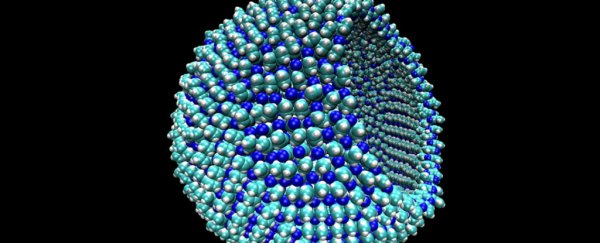While NASA researchers are trying to figure out how a mysterious cloud appeared over Titan, Saturn's methane-covered moon, others have been trying for years to understand something completely different: could life exist there?
After all, the frozen moon might not have any oxygen in its atmosphere, but it does appear to have a whole lot of other things that remind us of home – including mountain chains, stable pools of liquid on its surface, and thick, smoggy atmosphere.
"In many respects, Saturn's largest moon, Titan, is one of the most Earth-like worlds we have found to date," says NASA.
But does that make it habitable? One of the most fascinating hypotheses for Titan's habitability came in 2015, when chemical engineers in the US created a template explaining how life on Titan – and other places in the Universe – could be methane-based and oxygen-free.
Their conclusion: life could exist, but it wouldn't look anything like we expect here on Earth.
"We're not biologists, and we're not astronomers, but we had the right tools," said Paulette Clancy from Cornell University.
"Perhaps it helped, because we didn't come in with any preconceptions about what should be in a membrane and what shouldn't. We just worked with the compounds that we knew were there and asked, 'If this was your palette, what can you make out of that?'"
In other words, they weren't constrained by any pre-existing ideas of how life on Earth works.
Typically, when a planet or moon is hypothesised to be habitable, researchers are saying that it might have the ability to support the same kind of life we have on Earth. That is, carbon-based and oxygen-breathing.
"On Earth, life is based on the phospholipid bilayer membrane - the strong, permeable, water-based vesicle that houses the organic matter of every cell," Anne Ju reports for the Cornell Chronicle.
"A vesicle made from such a membrane is called a liposome. Thus, many astronomers seek extra-terrestrial life in what's called the circumstellar habitable zone, the narrow band around the sun in which liquid water can exist."
So the question becomes: what if life can work differently on other worlds, specifically Titan?
To find out, the team created a hypothetical cell membrane that they called an 'azotosome' after the French word "azote", meaning nitrogen.
This azotosome consists of nitrogen, carbon, and hydrogen molecules, which the team says can commonly be found in the colder regions of Titan. This membrane was nothing like the ones we have here on Earth, but it showed the same stability and flexibility as our liposomes.
After running tests in the lab to see whether the azotosome could actually form on Titan, the team found that under certain conditions, candidate compounds in methane self-assemble into membrane-like structures.
They also found that they could create a stable compound called acrylonitrile azotosome, which appeared to work as well as phospholipid membranes on Earth, reported Ju.
It's all hypothetical for now, but the team was able to show how life might not have to follow the exact same rules on other planets as it does here on Earth, opening up the possibility that we're being too limited in what we're looking for in our search for extraterrestrial life.
"Ours is the first concrete blueprint of life not as we know it," said team member James Stevenson.
While the team's findings are definitely interesting to think about, the best way to support the hypothesis is to gather samples from Titan and examine them more closely to get a better understanding of the conditions there.
Hopefully, as our spacecraft and instruments continue to get more powerful, we will finally unlock the mysteries of Titan.
The team's work was published in Scientific Advances.
